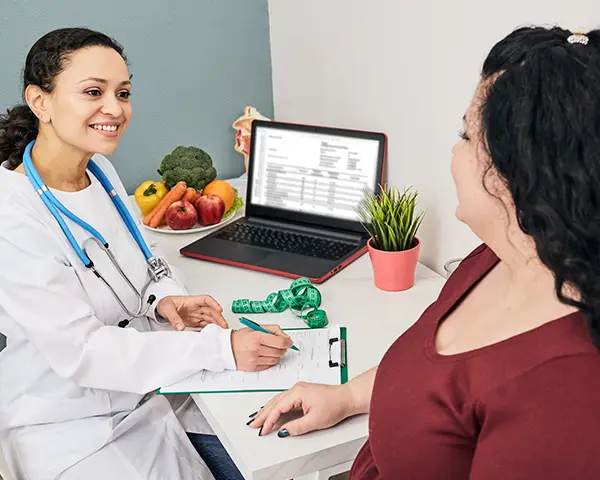Applying statistical techniques to produce reliable area-specific estimates for improved policymaking
Policymakers need local area–specific data to help make data-driven decisions about resource allocation and funding. However, most state and local jurisdictions do not have adequate resources or the infrastructure to collect the volume of data needed via surveys.
Small area estimation—a modeling technique—helps fill this critical gap for policymakers by providing reliable (accurate and precise) estimates for geographic areas or subpopulations where estimates solely based on observed survey data may be unreliable or cannot be produced. The process uses statistical models to link survey outcome variables with local area predictors to produce estimates for subpopulations, such as counties, health service areas, or socio-demographic subgroups. Small area estimation can provide reliable estimates across a variety of outcomes, including poverty and income, disease prevalence, employment, and student achievement.
RTI International leverages decades of statistical experience and geographic information systems (GIS) and data visualization expertise to provide clients with reliable local area–specific estimates to help guide policy decisions. Our solutions include area-level models for aggregate data and unit-level models for microdata:
Area-Level Models for Aggregate Data
Using summary statistics of aggregate areas—such as the proportion of people with a reported health condition in a state—area-level models incorporate additional information for these same areas, including demographic, geographic, and administrative data, to increase the precision of the summary statistics. Area-level models can produce small area estimates without requiring person-level information for any of the areas being estimated.
Unit-Level Models for Microdata
When microdata—such as person-level survey responses—are available on individual units, statistical models can be applied directly to these data, using auxiliary information at both the individual and area levels to produce more precise estimates.
Leveraging GIS and Data Visualization Solutions to Depict Estimates
GIS and data visualization tools bring small area estimates to life, transforming raw data into meaningful, location-specific insights. Interactive maps, dashboards, and charts help policymakers and stakeholders identify geographic patterns and pinpoint areas of critical need. These tools make it easier to allocate funding, plan targeted programs and services, and monitor progress over time.
RTI combines advanced geospatial technologies and data visualization expertise to illustrate small area estimates. Our experts integrate spatial data science, custom databases, and application programming to create interactive tools that reveal local insights across domains, including public health, social policy, and the environment.
Featured Small Area Estimation Work

The National Survey on Drug Use and Health (NSDUH)
The Substance Abuse and Mental Health Services Administration’s (SAMHSA's) NSDUH is an annual survey that gathers comprehensive data on substance use, mental illness, treatment, and recovery in the United States. RTI's team of statisticians leverage data collected through NSDUH to generate annual state and biennial substate estimates on substance use, mental health, treatment, and recovery outcomes using the rigorous survey-weighted hierarchical Bayes (SWHB) method. Our SWHB solution offers several key benefits over alternative approaches, including
- leveraging person- and unit-level predictors, instead of relying solely on aggregate-level predictors, resulting in more accurate estimates;
- producing estimates for large sample areas that are consistent with outputs from direct survey methods and robust against model misspecification; and
- generating national aggregates of estimates that closely match national survey results.

Model-Based Early Estimates of Disease Prevalence
Accurate estimates of disease prevalence across geographic areas and subpopulations are critical for informing policy and resource allocation. RTI experts used small area estimation to generate state-level estimates of various health outcomes using data from the Centers for Disease Control and Prevention’s National Health Interview Survey.

The Ohio Medicaid Assessment Survey
The Ohio Medicaid Assessment Survey is a multimode survey that provides reliable estimates on health care access and utilization, insurance status, and health conditions to inform state policy. RTI researchers produced reliable county-specific estimates for key outcomes by leveraging a model-based Bayesian method.

A New Model for Predicting Monthly County Employment
The U.S. Bureau of Labor Statistics (BLS) develops monthly county employment totals using models that do not account for dependence between counties. In partnership with BLS, RTI researchers developed a new method that treats job data over time in each county as a noisy curve. This model includes predictor, trend, and seasonality terms indexed by county to make more accurate predictions.

Estimating County-Level Health Outcomes in New York
The Behavioral Risk Factor Surveillance Survey (BRFSS) is a state-based telephone survey that gathers data on health risk behaviors, preventive practices, and access to care. RTI statisticians used BRFSS data to estimate county-level health outcomes in New York by developing a strategy focused on models, covariates, and program codes.

The National Crime Victimization Survey (NCVS)
NCVS is an annual national survey of the civilian, noninstitutionalized population aged 12 or older in the United States. The survey is the nation’s primary source of information on criminal victimization, collecting data from a sample of approximately 240,000 individuals each year. RTI researchers leveraged small area estimation to produce person- and household-level crime rates.
Related Projects
National Survey on Drug Use and Health (NSDUH)
Read More about National Survey on Drug Use and Health (NSDUH)







